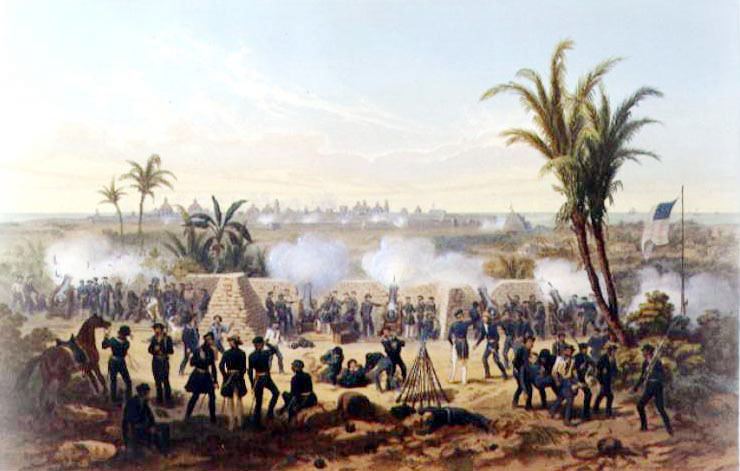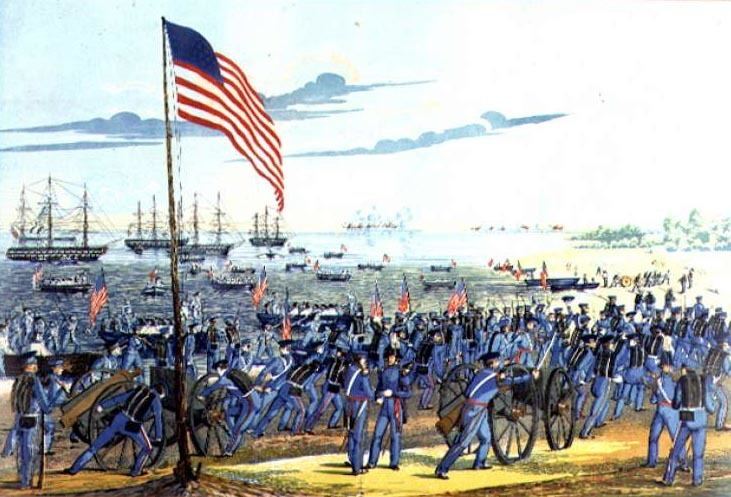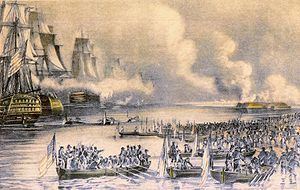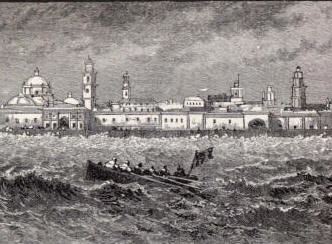8,600 3,360 | Dates 9 Mar 1847 – 29 Mar 1847 | |
 | ||
13 killed55 wounded 80 killed or ~350 killed~50 wounded Similar Mexican–American War, Battle of Cerro Gordo, Battle for Mexico City, Battle of Churubusco, Battle of Molino del Rey | ||
Siege of veracruz
The Battle of Veracruz was a 20-day siege of the key Mexican beachhead seaport of Veracruz, during the Mexican-American War. Lasting from March 9–29, 1847, it began with the first large-scale amphibious assault conducted by United States military forces, and ended with the surrender and occupation of the city. U.S. forces then marched inland to Mexico City.
Contents
- Siege of veracruz
- The siege of veracruz march
- Background
- Mexican defenses
- Landings
- Envelopment
- Investment
- Surrender
- Aftermath
- References

The siege of veracruz march
Background

After the battles of Monterrey and Buena Vista, much of Zachary Taylor's Army of Occupation was transferred to the command of Major General Winfield Scott in support of the upcoming campaign. That campaign, determined by Scott and other Washington officials, would be a Veracruz landing and an advance inland. Mexican military intelligence knew in advance of U.S. plans to attack Veracruz, but internal government turmoil left them powerless to send crucial reinforcements before the American assault commenced.
Mexican defenses

Veracruz was considered to be the strongest fortress in North America at the time. Brigadier General Juan Esteban Morales commanded a garrison of 3,360 men which manned three major forts guarding Veracruz:

Landings

The Americans arrived at Anton Lizardo, Veracruz in early March. Scott agreed with Conner's suggestion for a landing site at Collado Beach, 3 mi (4.8 km) south of Veracruz. The 1st Regular Division under Worth was chosen to make the landing first, followed by Patterson's volunteers and then Twiggs' regular division.

Conner's Mosquito Fleet moved to within 90 yd (82 m) of the beach to supply covering fire if necessary. By 12:15 pm on 9 March, this force was off Collado Beach, followed by larger vessels over the next three hours and a signal for landing the surfboats at 5:30 pm. Just before the main force touched the beach, a gig dashed ahead, and General Worth with his staff jumped ashore. Worth's whole division landed without firing or receiving a single shot. By 11 pm, Scott's entire army had been brought ashore without a single man lost, and the first large scale amphibious landing conducted by the U.S. military was a success.
Envelopment
Once ashore Patterson's division began marching northward to effect a complete envelopment of the city. One of Patterson's brigades under Gideon Pillow drove off a Mexican cavalry at Malibrán, cutting off the Alvarado road and the city's water supply. Quitman and Shields managed to drive off cavalry attempting to prevent the investment. By 13 March, the U.S. had completed a 7 mi (11 km) siege line from Collado in the south to Playa Vergara in the north. On 17 March, siege lines were dug for Scott's siege artillery, sufficient for taking the city but not Ulua.
Investment
The besiegers were plagued by sorties from the city, and Col. Juan Aguayo used the cover of a storm to slip his Alvarado garrison into Veracruz. Commodore Matthew C. Perry, Conner's successor, returned from Norfolk, Virginia after making repairs on the USS Mississippi, on 20 March. Perry and Conner met with Scott regarding the Navy's role in the siege, and offered six guns that were to be manned by sailors from the ships. The naval battery was constructed under the direction of Captain Robert E. Lee 700 yd (640 m) from the city walls.
On March 22, Morales declined a surrender demand from Scott, and the American batteries opened fire at 4:15 pm followed by those of Commander Josiah Tattnall's Mosquito Fleet at 5:45 pm. The Naval battery's heavy cannonballs easily broke the coral walls. Congreve rockets were fired into the defenses and the combined fire forced the abandonment of Fort Santiago as Mexican morale began to drop.
On March 24, Persifor F. Smith's brigade captured a Mexican soldier with reports that Antonio López de Santa Anna was marching an army from Mexico City to the relief of Veracruz. Scott dispatched Colonel William S. Harney with 100 dragoons to inspect any approaches that Santa Anna might make. Harney reported about 2,000 Mexicans and a battery not far away, and he called for reinforcements. General Patterson led a mixed group of volunteers and dragoons to Harney's aid and cleared the force from their positions, chasing them to Madellin.
Surrender
Scott made plans for an assault on the city when on 25 March, the Mexicans called for a cease-fire to evacuate women and children which Scott refused. That night, Morales' council of war advised surrender prompting Morales to resign while General José Juan Landero assumed command. A truce was called at 8 am on 26 March while terms of surrender were negotiated and concluded by 27 March. On 29 March, the Mexicans officially surrendered their garrisons in Veracruz and Fort Ulúa and later that day, the U.S. flag flew over San Juan de Ulúa.
Aftermath
The obstacle to an advancement to Mexico City was removed and Scott made immediate plans to leave a small garrison at Veracruz and march inland, his first objective being Jalapa. Along the way, Scott would in fact encounter a sizable Mexican army under Santa Anna at the Battle of Cerro Gordo.
